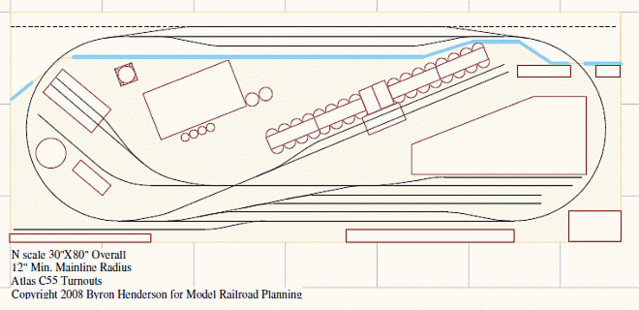 As I write in the October 2011 issue of Model-Railroad-Hobbyist magazine, a guiding philosophy can help turn a variety of interesting elements into a cohesive track plan. The owner's long-standing dream for this HO layout was "Believable scenery with interesting operations."
As I write in the October 2011 issue of Model-Railroad-Hobbyist magazine, a guiding philosophy can help turn a variety of interesting elements into a cohesive track plan. The owner's long-standing dream for this HO layout was "Believable scenery with interesting operations."Scenic inspiration came from the former D&RGW's famed "High Line" in Colorado, the operating theme of logging was informed by the craftsman kits the owner was building, and the room presented a few challenges and opportunities.
Once again, I resorted to my old stand-by of a spiral peninsula with one central "blob". Hey, I use it a lot because it works! This created a walk-in track plan with more running length and adequate aisles. The increased running length helped provide the variation in elevations the owner desired while keeping mainline grades to less than 2.5%.
Returning often to the touchstone of believable scenery and interesting operations helped maintain focus and eliminate unworkable configurations.
One of the ideas I touched on in the MRH article is the unrealistic state of many designers' model railroad engine service areas. Often they just plunk down a few undersized rectangles and call it a day.
But watering, sanding and coaling facilities take up significant room and demand specific track relationships in actual modeling. Better to deal with these requirements "honestly" than to sketch-and-hope.
The layout owner is a talented craftsman kit builder and we worked with the footprints of some of his prize-winning structures to create featured scenes on the track plan. A layout that will look good and work well comes out of adhering to a guiding philosophy.








